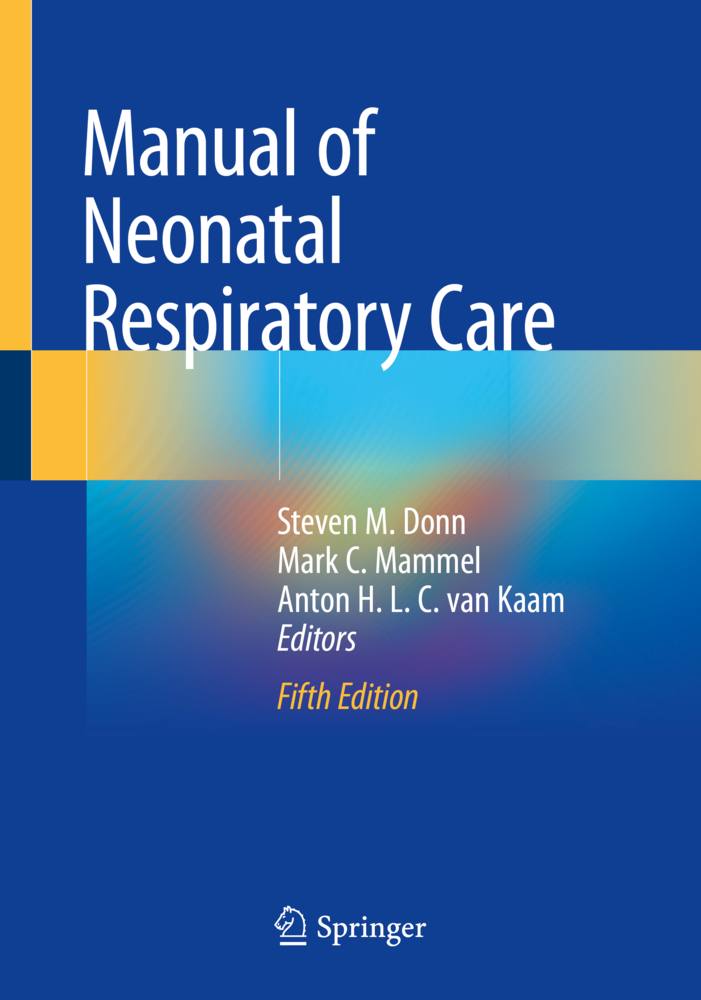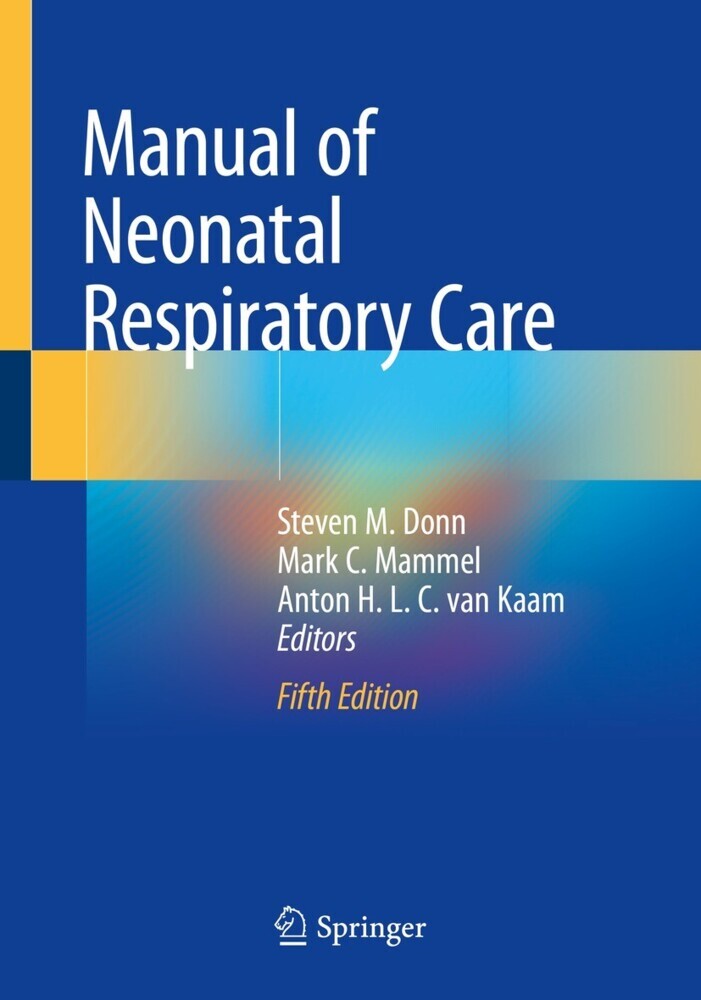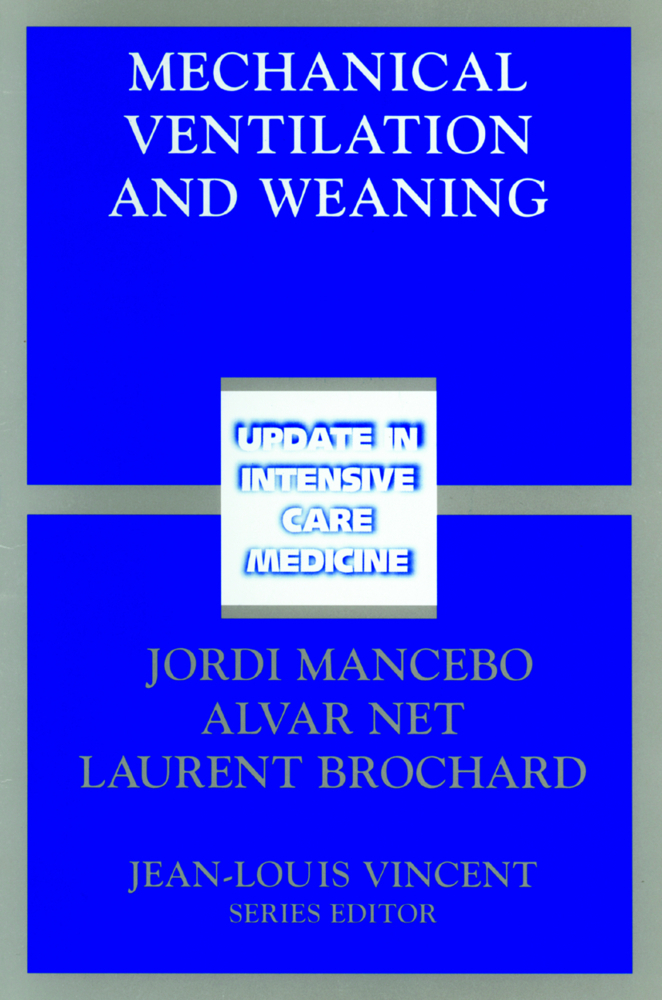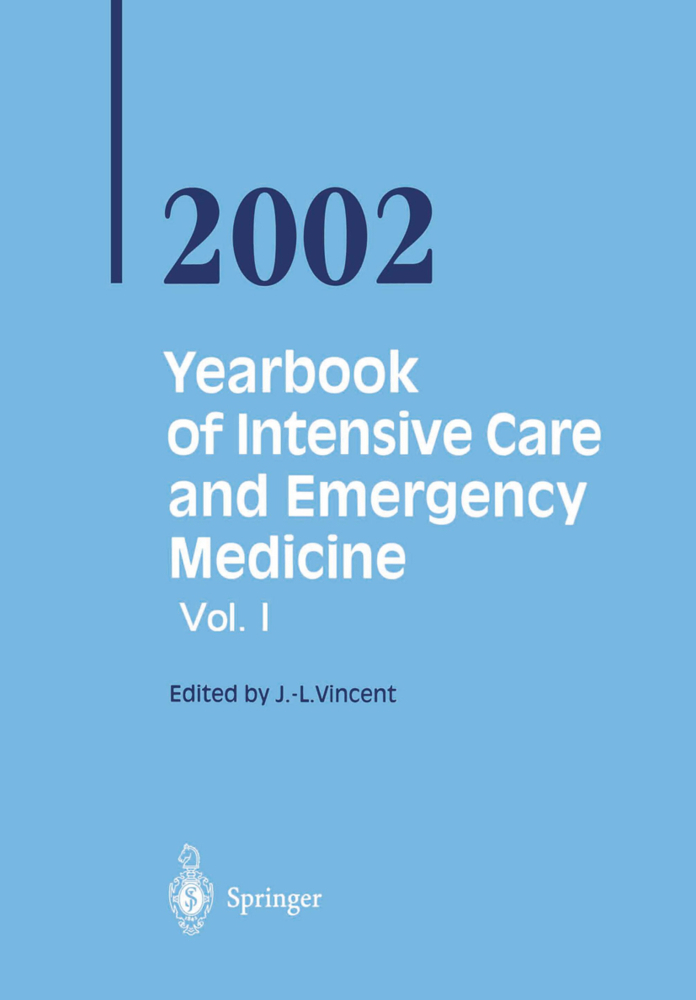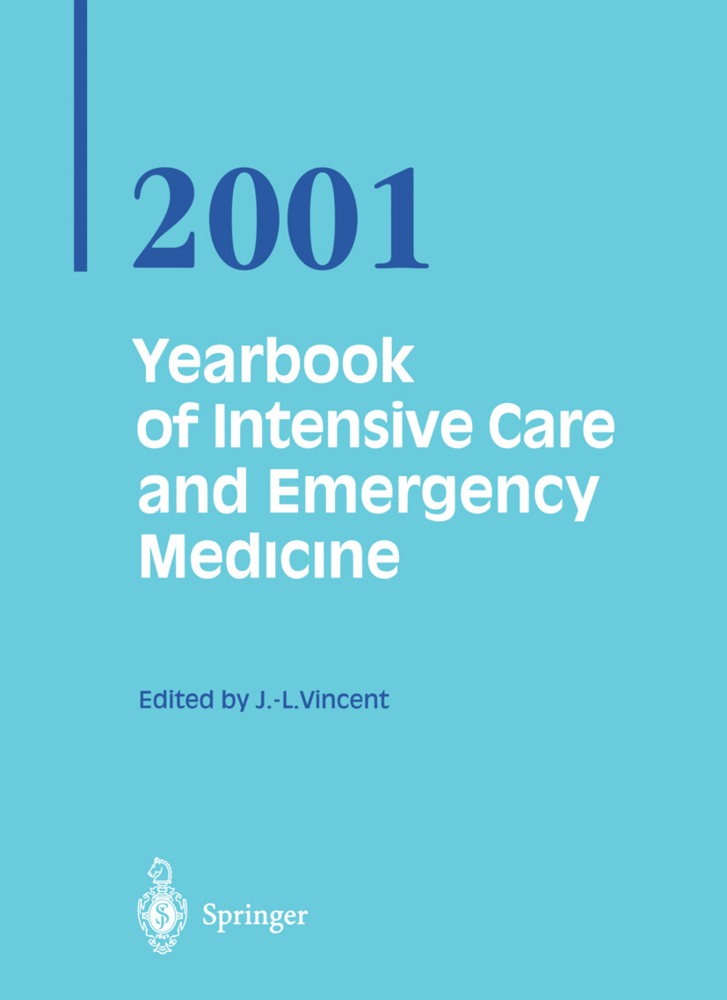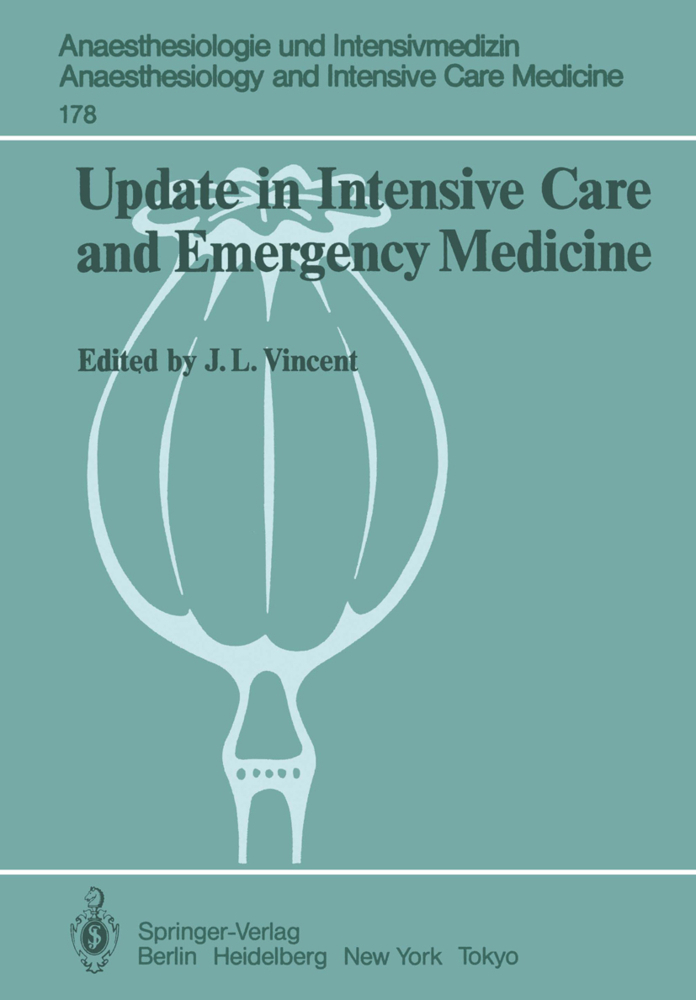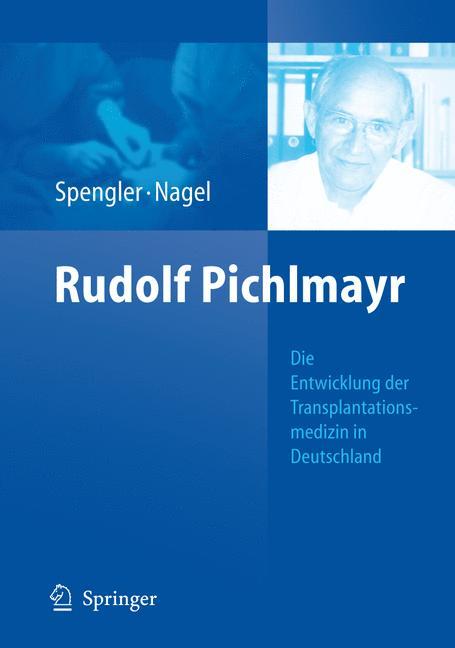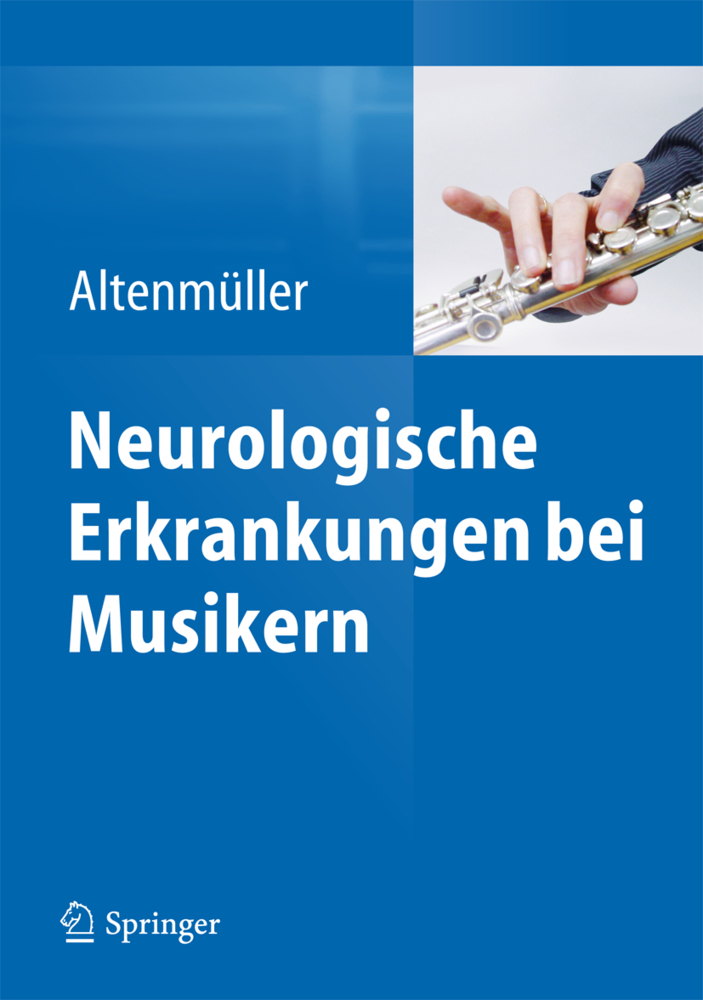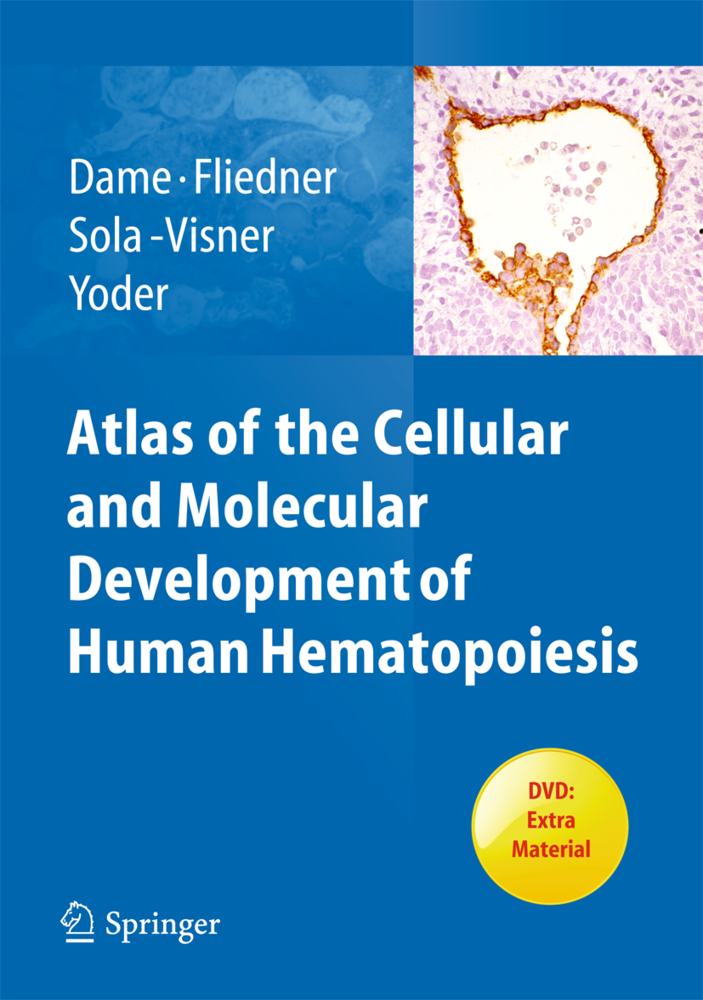Manual of Neonatal Respiratory Care
Manual of Neonatal Respiratory Care
Respiratory care is the largest overall component of neonatal intensive care, and the fifth edition of the Manual of Neonatal Respiratory Care is the leading bedside guide for all aspects of respiratory care in the neonatal intensive care unit. Its easy-to-read outline format is simple yet comprehensive and covers all aspects of lung disease in the newborn infant, including embryology, principles of mechanical ventilation, procedures and techniques, monitoring, devices, adjunctive therapies, management of respiratory illness, complications, outcomes, and related issues.
The latest edition includes fully revised and updated information, coverage on new equipment and devices, and an expanded authorship to enhance its international appeal. The new edition also features two new co-editors, Dr. Mark Mammel and Dr. Anton Van Kaam, internationally recognized experts in the field who bring a fresh perspective to the manual.
Divided into sixteen sections, the book begins with a section on lung development and maldevelopment, specifically covering the development of the respiratory system, malformations, deformations, disorders of the neonatal airway, and developmental lung anomalies. The second section reviews the principles of mechanical ventilation, with coverage on such topics as spontaneous breathing, oxygen therapy, oxygen toxicity, pulmonary mechanics, and ventilator parameters. The third section of the manual outlines procedures and techniques, including neonatal resuscitation, laryngoscopy and endotracheal intubation, and tracheostomy. The following section dives into the monitoring of the ventilated patient, specifically focusing on continuous monitoring techniques, clinical controversies in pulse oximetry, and echocardiography. The next section spotlights noninvasive ventilatory techniques, such as nasal interfaces, humidified high-flow nasal cannula therapy, and sustained inflation.
The sixth section of the manual focuses on ventilatory modes and modalities, with coverage on intermittent mandatory ventilation, pressure support ventilation, and pressure control ventilation. The following section segues into high-frequency ventilation, reviewing general concepts, high-frequency jet ventilation, and high-frequency oscillatory ventilation. The eighth section centers around commonly used neonatal ventilators, such as the DRAEGER VN500 ventilator, the AVEA ventilator, and the Twinstream ventilator. The ninth section reviews adjunctive therapies, including hemodynamic support, nutritional support, the use of sedation and analgesia, inhaled nitric oxide therapy, and ECMO. The tenth section shifts gears to spotlight the management of common neonatal respiratory diseases, with chapters on mechanisms of respiratory failure, tissue hypoxia, respiratory distress syndrome, persistent pulmonary hypertension, and pulmonary hypoplasia/agensis among others.
Section eleven reviews the etiology, pathogenesis, and management of bronchopulmonary dysplasia, as well as the long-term outcome of newborns with this chronic lung disease. The next section presents complications associated with mechanical ventilation, such as thoracic air leaks, neonatal pulmonary hemorrhage, and neurologic complications. The following two sections spotlights ethical, legal and other considerations, among them nursing care of the ventilated infant, long-term ventilator dependency, home ventilation, withdrawal of ventilatory support, and medical liability and risk management. The fifteenth section focuses on research and literature, with coverage on interpreting medical literature, data collection and assessment of respiratory outcomes, and contemporary classics in neonatal respiratory care. The final section presents ventilatory case studies.
The text also features over 300 high-yield radiographic images, figures, tables, and algorithms.
Development of the Respiratory System
Malformations, Deformations, and Disorders of the Neonatal AirwayDevelopmental Lung Anomalies
Spontaneous Breathing
Pulmonary Gas Exchange
Oxygen Therapy
Oxygen Toxicity
Pulmonary Mechanics
Basic Principles of Mechanical Ventilation
Classification of Mechanical Ventilation Devices
Ventilator Parameters
Respiratory Gas Conditioning and Humidification
Cardio-Respiratory Examination
Neonatal Resuscitation
Laryngoscopy and Endotracheal Intubation
Vascular Access
Tracheostomy.- Continuous Monitoring Techniques
Clinical Controversies in Pulse Oximetry
Interpretation of Neonatal Blood Gases
Volumetric Capnography
Neonatal Pulmonary Graphics
Radiography
Transillumination
Echocardiography
Bronchoscopy
Nasal Interfaces for Noninvasive Ventilation
Humidified High-Flow Nasal Cannula Therapy
Continuous Distending Pressure
Sustained Inflation
Noninvasive Ventilation
Nasal Intermittent Positive Pressure Ventilation
Vapotherm High-Flow Support
Intermittent Mandatory Ventilation
Synchronized Intermittent Mandatory Ventilaton
Assist/Control Ventilation
Pressure Support Ventilation
Volume-Targeted Ventilation
Volume Guarantee Ventilation
Pressure Control Ventilation
High-Frequency Ventilation: General Concepts
High-Frequency Jet Ventilation
High-Frequency Oscillatory Ventilation
Ventilator Mode Classification
VIP BIRD Gold Ventilator
AVEA Ventilator
Twinstream Ventilator
Puritan Bennett 840 and 980 Ventilators
Draeger VN500 Ventilator
Servo-i Ventilator/NAVA
SLE 5000 and SLE 4000 Infant Ventilators
STEPHANIE and SOPHIE Ventilators
Leoni Plus Infant Ventilator
Bunnell Life-Pulse High-Frequency Jet Ventilator
High-Frequency Oscillatory Ventilators
Hemodynamic Support
Nutritional Support of Ventilated Infants
Surfactant Replacement Therapy
Pharmacologic Agents
Automatic Control of Oxygen Delivery
Aerosolization and Nebulization
Sedation and Analgesia
Inhaled Nitric Oxide Therapy
Extracorporeal Membrane Oxygenation
Liquid Ventilation for Neonatal Respiratory Failure
Mechanisms of Respiratory Failure
Tissue Hypoxia
Indications for Mechanical Ventilation
Respiratory Distress Syndrome
Pneumonia
Meconium Aspiration Syndrome
Persistent Pulmonary Hypertension of the Newborn
Congenital Diaphragmatic Hernia
Pulmonary Hypoplasia/Agenesis
Chylothorax
Apnea, Bradycardia, and Desaturation
Optimizing Lung Volume
Weaning and Extubation
Etiology and Pathogenesis
Management
Long-Term Outcome of Newborns with Bronchopulmonary Dysplasia
Thoracic Air Leaks
Patent Ductus Arteriosus
Neonatal Pulmonary Hemorrhage
Retinopathy of Prematurity
Neurologic Complications of Mechanical Ventilation
Nursing Care of the Ventilated Infant
Transport of Ventilated Babies
Role of the Respiratory Therapist in the NICU
Long Term Ventilator Dependency in Infants without Lung Disease
Home Ventilation
Discharge Planning and Follow-Up of the NICU Graduate
Initiation of Life Support at the Border of Viability
Withdrawal of Ventilatory Support.- Medical Liability, Documentation, and Risk Management
Interpreting Medical Literature
Data Collection and Assessment of Respiratory Outcomes
Practical Quality Improvement in the NICU
Contemporary Classics in Neonatal Respiratory Care
Ventilatory Cases.
Donn, Steven M.
Mammel, Mark C.
van Kaam, Anton H.L.C.
| ISBN | 978-3-030-93996-0 |
|---|---|
| Artikelnummer | 9783030939960 |
| Medientyp | Buch |
| Auflage | 5. Aufl. |
| Copyrightjahr | 2022 |
| Verlag | Springer, Berlin |
| Umfang | XXXIV, 936 Seiten |
| Abbildungen | XXXIV, 936 p. 187 illus., 123 illus. in color. |
| Sprache | Englisch |

